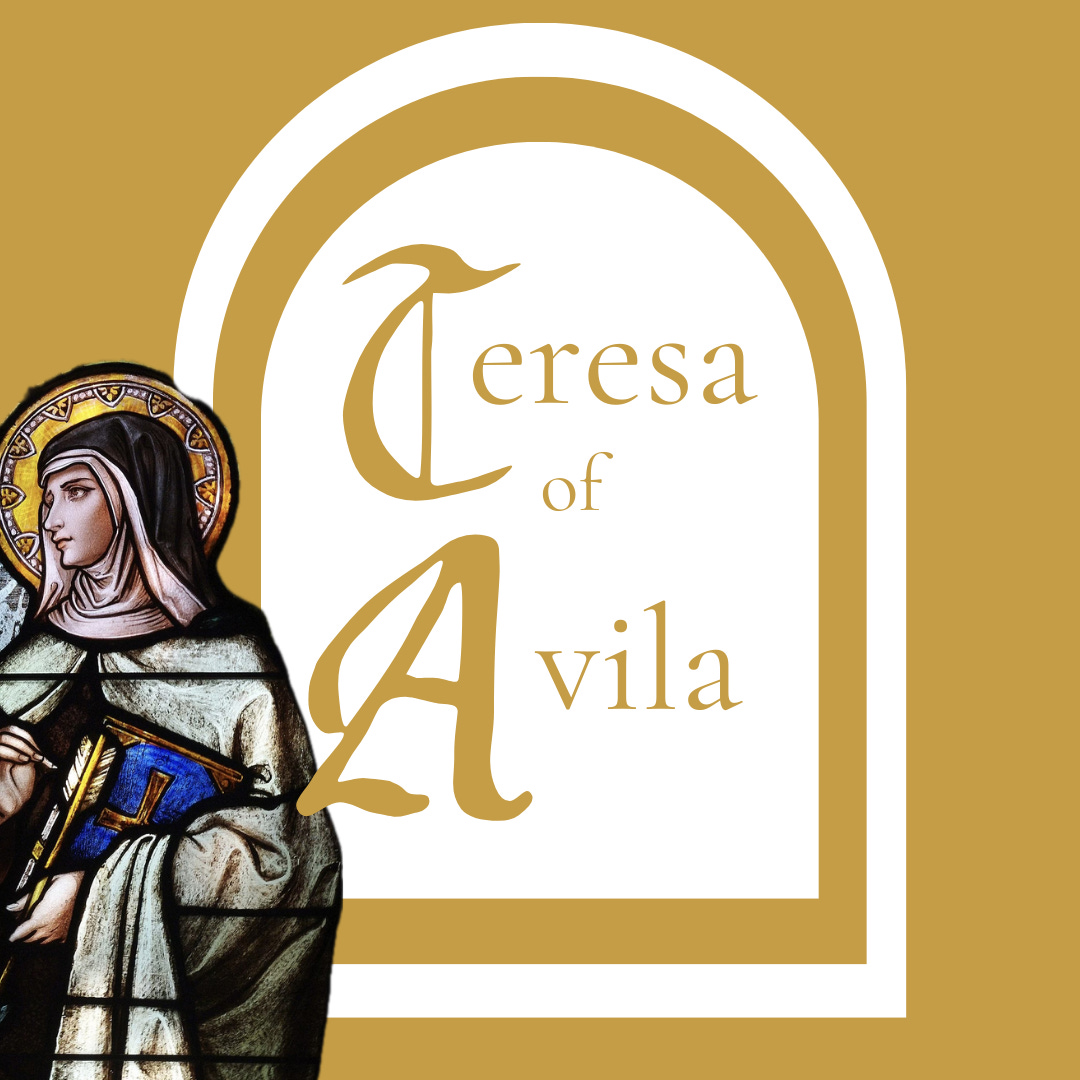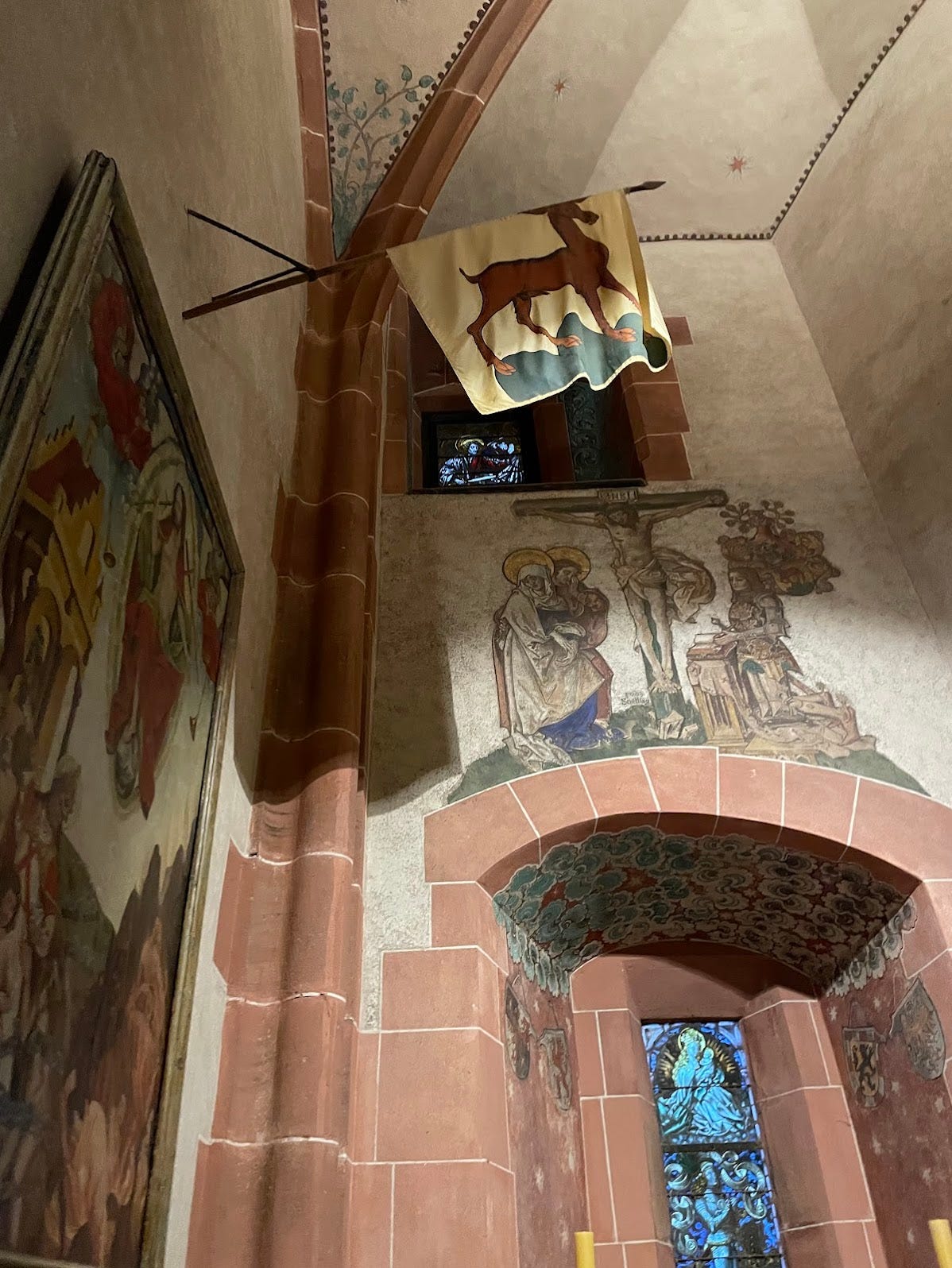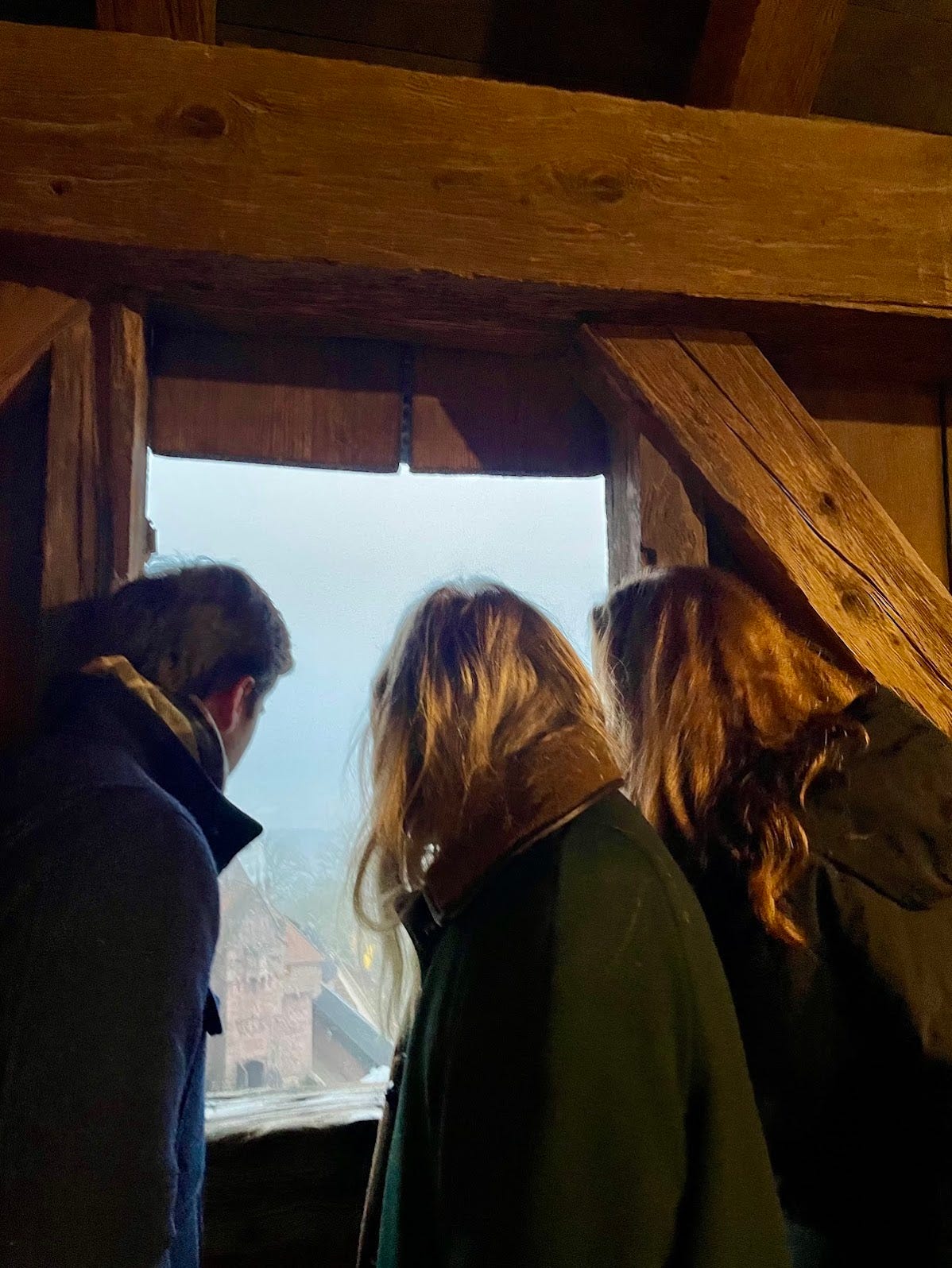Let nothing disturb you,
Let nothing frighten you,
All things are passing:
God never changes.
Patience obtains all things
Whoever has God lacks nothing;
God alone suffices.
This striking prayer by Teresa of Ávila is tucked into the midday liturgy of the Celtic Book of Prayers. I read it many times before realising these words were hers. They roll off the tongue with power, each definite statement washing over you with a kind of aching peace.
Welcome to our time with Teresa of Ávila, Doctor of the Church, theologian and mystical writer, fierce leader and founder of many convents, and a woman deeply committed to friendship with God.
This is the first monthly installment of ‘The Year with the Mystics’ series I’ll be undertaking in 2025. Please don’t dive into this without reading the introduction post for context on why learning more about the mystics is a timely activity. As an evangelical protestant, this cast of characters has been new and delicious to me. We tend to focus on theologians and to hop from Augustine to Martin Luther, brushing past 1000 years of church history and many fascinating figures. There’s much to glean from these men and women of old (and new)—enjoy!
Teresa’s Background & Context
Teresa of Ávila was a Spanish mystic who lived from 1515 to 1582 during a tumultuous era, including both the Inquisition domestically and the Protestant Reformation unfolding more broadly in Europe. During the stringent times of the Inquisition, where the church was consumed with purity, institutional power, and rooting out heresy, Jewish and Muslim converts to Christianity were subject to intense surveillance—with the regime concerned that those converts might be continuing their former religious practices in secret.
Because her grandfather was a Jewish convert, Teresa remained under scrutiny by the Inquisition throughout her life and ministry. But her early years were filled with boisterous romantic chaos. She grew up in a wealthy family and was known for her flirtatious personality, which landed her in a convent when she was sixteen because her parents were worried about her behaviour and love of romance novels. Initially finding it restrictive, Teresa soon experienced a spiritual awakening there and would soon go on to dedicate her entire life to reforming the Carmelite order. But in many ways, her exuberance stayed with her throughout her life, no doubt the spark that enabled her to establish 17 convents involving plenty of negotiation with powerful figures in a male-dominated society. Funnily enough, much of Teresa’s time was spent as a kind of businesswoman, managing endless property logistics and meetings with church leadership.
Again, Teresa was a woman of influence—someone who pushed heavily against the status quo of her time, which can be easily seen in the emphases she took up in her reform work. In an age consumed with status, race, class, and honour, Teresa saw these worldly influences creeping into monastic life and sought to purge them. No more luxury conditions at convents catering to those girls who joined for prestige and family expectations. No more maintaining social class differences or becoming enmeshed with the politics of the day through patron/ client models.
Kinship with Christ
While personal prayer and faith were seen as a threat to orthodox adherence to the institutional church, seen with suspicion in her context, Teresa had undergone a profound encounter with God and craved to create spaces where other nuns could experience the same. The convents Teresa founded brought back austerity, simplicity, and contemplative prayer. Her antidote to the obsession with purity of race and religion in her day?
A relational theology— one of Friendship with God and a deep kinship with Christ.
This became the basis for the common life forged in her convents. As Rowan Williams writes, ‘For Teresa, the twelve (disciples) represent the ideal Christian community, without distinctions of class or kin, bound by friendship with each other and with Christ’…‘on such a basis, there can be no excuse for defending any kind of human status or family pride or racial exclusion.’1
We are Christ’s kin. With such a theology, Williams says, Teresa ‘offered another model of life together, grounded in the gift of God’s welcome and the daily attempt to keep our own hearts open to this in silence and adoration’2 This practice of friendship with God was a kind of radical reorienting, where the powerless and the powerful met on equal footing and broke bread together.
Her Incarnational Theology
I’ll just briefly highlight one characteristic of Teresa’s theology here: her premium on the incarnation. God as human, embodied and breathing as the person of Jesus Christ, structures her whole spiritual worldview. She believes we should continually be meditating on this reality. The incarnation is a ‘lived theology’ as Williams puts it, which explains her model of monastic community and theology of friendship. For Teresa, contemplation and action are not opposing forces but are drawn together in the mystery of Christ’s Incarnation. Union with God through contemplation is experienced in community and involves an outward thrust manifested in a kind of self-abandoning (or kenotic) love which moves you to action, as we’ll see more below in her writings.
The Incarnation also means that divine encounters are not limited to moments of solitude in prayer and spiritual discipline. Instead, she famously says, ‘The Lord walks among the pots and pans, helping you both interiorly and exteriorly.’
The Interior Castle
Teresa compares the soul to an expansive castle containing many rooms. She wrote The Interior Castle to help other nuns along their spiritual journeys. Through it, she invites readers to move through the ‘seven mansions’ inside of them. Each mansion describes a spiritual state of intimacy with God—each one progressing, whereby we are least distracted and nearest to God in the seventh mansion.
‘I thought of the soul as resembling a castle, formed of a single diamond or a very transparent crystal, and containing many rooms, just as in heaven there are many mansions. If we reflect, sisters, we shall see that the soul of the just man is but a paradise, in which, God tells us, He takes His delight. What, do you imagine, must that dwelling be in which a King so mighty, so wise, and so pure, containing in Himself all good, can delight to rest? Nothing can be compared to the great beauty and capabilities of a soul; however keen our intellects may be, they are as unable to comprehend them as to comprehend God, for, as He has told us, He created us in His own image and likeness.’
In her book Reclaiming Quiet,
speaks of cultivating an inner space of peace inside yourself to meet with God. She points to Teresa’s metaphor of a castle and asks her readers what image resonates with them, what lies at their centre—a front porch, a kitchen table, a mansion? What is the outcome of this practice? Rowan Williams says is to stimulate the ‘whole movement of a soul towards Christlikeness’.Of course, there’s a risk of a kind of incessant naval-gazing, which can happen in misplaced mysticism. Teresa warns against this with the philosophy that ‘too much is as bad as too little’, going on to say:
‘The first few mansions become the place in which we endeavour to escape the ‘obsessive and defensive concern with self’ and instead focus on the light of God’s ‘radiating light from the centre’. I find this subversion of focusing on humility as a response to our preoccupation with love from God, rather than merely a disdain for our own needs an attractive and compelling prospect.’
Again, with Teresa and the mystics, the goal is always to focus less on the self and fixate on God himself. Throughout the book, she uses the images of vipers slithering around in the mansion when talking about things which distract us from God, chief among them a kind of obsessive self-awareness. The further you progress in the mansion, the fewer snakes you find.
In certain stages of spiritual growth, Teresa focuses on receptivity, thinking through the relationship between human effort and divine illumination. While we are called to self-emptying and contemplation—no perfect form will conjure up God’s presence. In the sixth mansion, Teresa says the door to the seventh mansion will only be opened ‘when it pleases His Majesty to open it’. Here, Williams says that she is trying to ‘elucidate the transition from the state in which you do things for God to the state where God does things in you.’
You’ll have to read the book yourself or listen to a podcast overview below to learn about the specifics of each of the mansions. But where do they all crescendo? What characterises this mysterious ‘seventh mansion’? The soul, after several mansions of not being active but instead simply receiving God, becomes active again in love for others, flowing out of a union, a kind of spiritual marriage, with God—a concept very common to the mystical tradition. Williams writes,
‘But the definitive reality is our being in Christ and, through Christ, in the Father in such a way that we no longer find our state of mind obsessively interesting: there may be joy or misery, weakness or resolution, but the soul registers all with ‘strange forgetfulness, interested only in finding what will serve the honour of God and needs of God’s human creation. The point of the soul’s transformation is ‘the birth always of good works…For the soul in the seventh mansions the 'inner life’ does not exist as an independent object of examination and concern. Attention is wholly on God and the world’.
Teresa helps us see the sheer, simple, and stunning arc of the spiritual life through this elaborate castle metaphor—when the self is finally emptied when God has drawn near to us, and we are united with him, we can actively move out into the world with love. Friendship, better yet kinship, with God draws us into a profound care for those around us. Our spiritual life mirrors the incarnation, God dwelling in the flesh, acting out his affection to the world.
Her Relevance Today
Teresa’s story, her theology, her mysticism—all are a beautiful gift to us in our times. Firstly, she models a mysticism that is balanced: between our actions and God’s, between the spiritual and the physical, between self-reflection and self-emptying, and between the daily and the transcendent. As more and more people begin to look to the mystics, people hungry to encounter God and not only learn more information or propositional statements about him, we need to remember the warnings and parameters that Teresa helpfully lays out.
Secondly, throughout her work, Teresa advocates for a much-needed posture of spiritual humility and self-forgetfulness, which I found to be refreshing and convicting. When we live in a world carefully crafted to make us individual consumers and selfish people, Teresa helps call us to something higher. She says:
‘Let humility always be at work, like the bee at the honeycomb, or all will be lost. But, remember, the bee leaves its hive to fly in search of flowers and the soul should sometimes cease thinking of itself to rise in meditation on the graduer and majesty of its God.’
Lastly, we can take notes on her refusal to link up with the power structures of her day. She keenly cuts across the culture’s shortcomings, boldly bucking against the bureaucracy and prejudice of the institutional church of her day. In America, this temptation for the church to link up with political power is stronger than ever. But may we remember Teresa’s insistence that intimacy with God is our highest priority and friendship with God moves us towards the powerless, growing an infectious love for the world around us.
There’s so much more about Teresa that is painfully missing in this post. During her life, she fought through bouts of illness and continued to struggle with the investigations of the Inquisition, and while she, in many ways, demonstrated a balanced mysticism, she also experienced vivid visions, levitations, and spiritual ecstasy throughout her days. She was a known mentor of the famous St. John of the Cross and even playfully made fun of his writings in some of her letters. The mystics are truly wide-eyed and unexpected characters—and Teresa doesn’t let us down in her strangeness, her zest for life, and her intense longing to be near God. It turns out the Lord really does work in mysterious ways.
Below, you’ll find a list of sources I used to study Teresa and recommendations if you want to dig into her life and writings.
Drinking in all the oddities and beauties around me.
Warmly,
Carolyn Morris-Collier
Sources/ Recommendations
The Interior Castle by Teresa of Ávila
Teresa of Ávila by Rowan Williams
Edith Stein: Essential Writings by John Sullivan
Endless Life: Poems of the Mystics by Scott Cairns
Luminaries: Twenty Lives that Illuminate the Christian Way by Rowan Williams
How to Read Teresa of Ávila / Carlos Eire on the Yale Center for Faith & Culture Podcast
Rapture in the Vernacular The poems of St. Teresa of Ávila by Sharon Mesmer
The year of the mystics Ready to be turned upside down? by Belle Tindall
The Spirituality of St Teresa of Avila
Luminaries: Twenty Lives that Illuminate the Christian Way by Rowan Williams
Teresa of Ávila by Rowan Williams
















The interior castle is brilliant. Along with Catherine of Sienna - in fact all the female Doctors of the Church - their primary works are like gold dust to our modern times. We have externalised religion since the Reformation, as if it’s about talking and theological disputes. These ladies sat in contemplation and meditation, with Christ. They have the authenticity of works like the Cloud of Unknowing and the Imitation of Christ, and it’s a tragedy that everyone hasn’t read all of these at least once! It’s equally tragic that all Churches don’t offer regular silent holy hours before the exposed Eucharist, so that we may all follow in their footsteps…
Thank you for starting this series, Carolyn. I'm excited to dig in.
--Miranda K. in Dallas